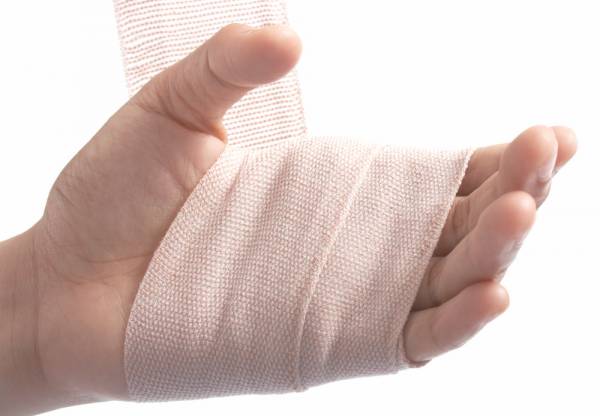You work out hard and occasionally you do some serious damage to your hands. Last week we talked about how to prevent rips to the skin on your palms, but what happens once a rip has occurred? What can you do to heal quickly and safely?
Wash It Out
The first thing to do when your hand rips is clean it out well. It is going to be painful, but wash it out with warm water and soap. Depending on the environment, you may also want to rinse it with Iodine.
Trim Excess Skin
If the skin is torn in a way it is going to catch and rip further, use sterilized scissors and trim the excess skin away. If the tear is small, more like a burst blister, than leave the skin to protect the healthy flesh underneath.
Bandage and Keep Moist
The key to healing quickly and to minimizing pain is to keep the wound site moist. Use a product with Vitamin E, if possible; otherwise anything from Vaseline to Bag Balm will do the trick. Keeping the rip moist will prevent it from drying and tearing further. If you have cracked open a dried wound, you know it is very painful and causes healing to take much longer.
Bag It Overnight
One trick many gymnasts use, and I have taken advantage of myself, is to wear gloves or plastic bags over my hands overnight. It keeps your hands moisturized and also helps prevent you from spreading lotion all over your bedding.

Folk Remedies
If you look around the Internet you will find a large variety of folk remedies for ripped hands. The sport of gymnastics has been dealing with this problem for many decades. Two of the most common suggestions are tea bags and Preparation H. It is possible the tannic acids in tea help the healing process, but using them is a bit messy. Preparation H is more useful. It can help with swelling and more importantly has a mild anesthetic quality that may provide temporary relief.
Synthetic Skin
You have ripped your hand, but you want to keep training. What can you do? Three different options are quick and easy.
The first option is to use liquid New Skin to create a tough, synthetic layer over your rip. Be aware, New Skin sticks to healthy skin, too, and if it starts to peal off you do not want to pull on it.
The second option is to use a synthetic skin patch. There are a number of different brands and they work with varying success.
Lastly, you can always use the same leather grips you wore when you were trying to prevent your rips. Keep your rips moisturized and bandaged and wear the leather grips over the bandage.
But, remember the best way to deal with rips is to prevent them. Take good, daily care of your hand and keep sanding down your calluses.






